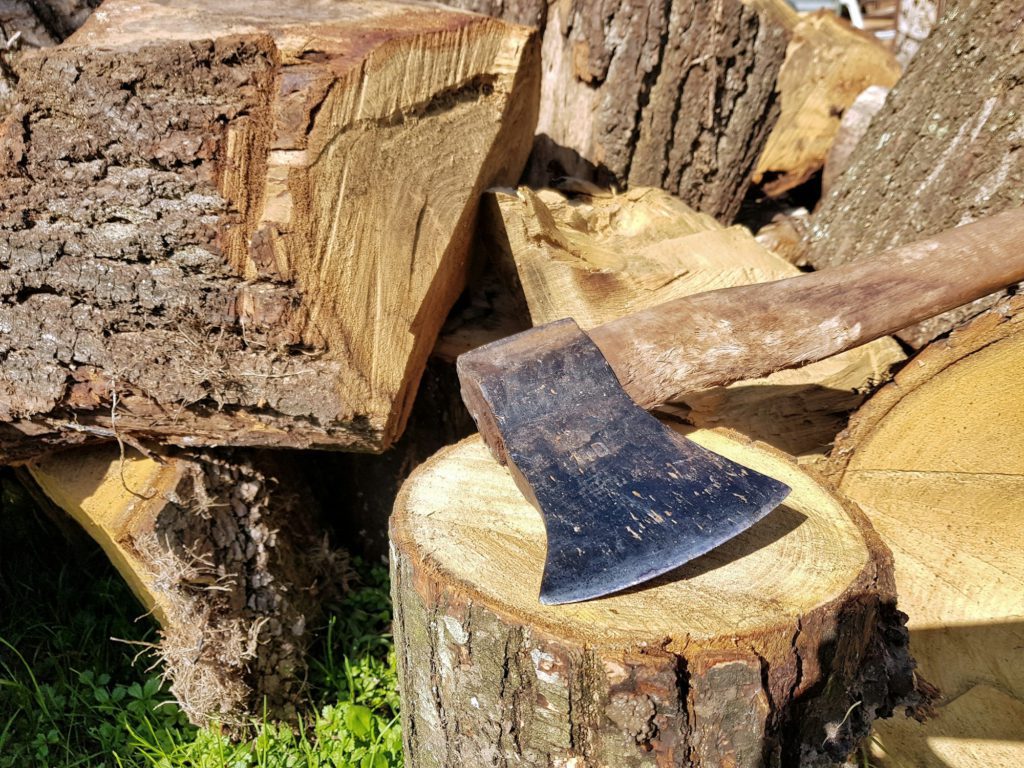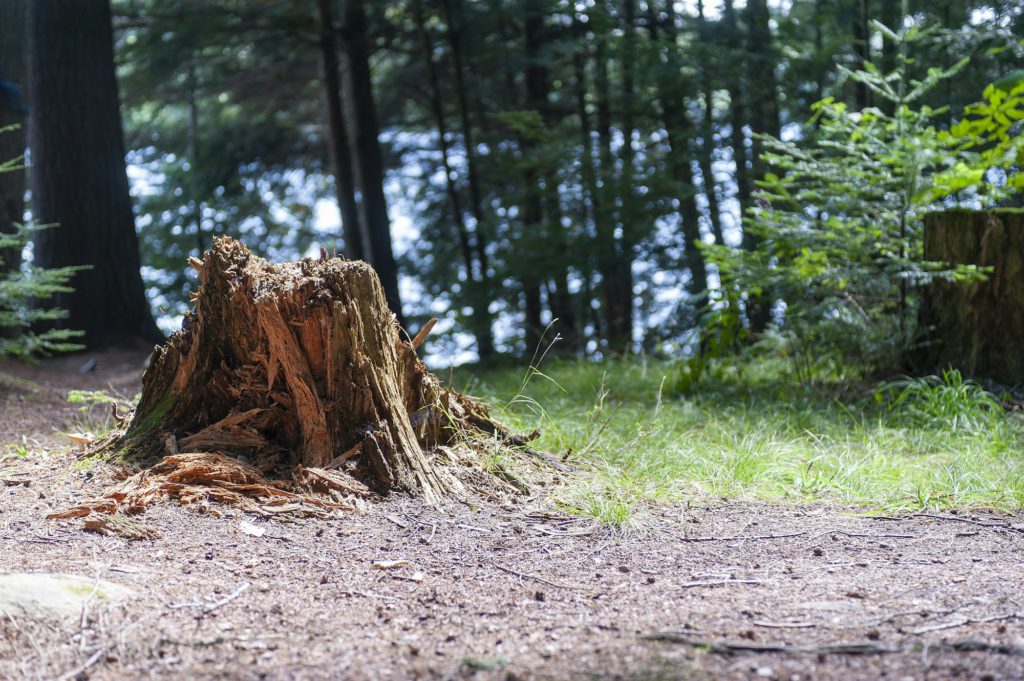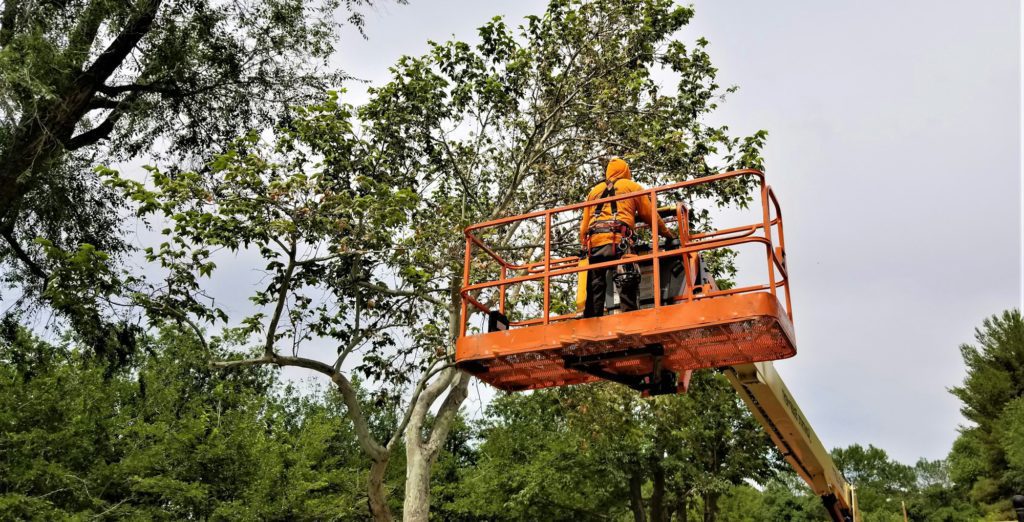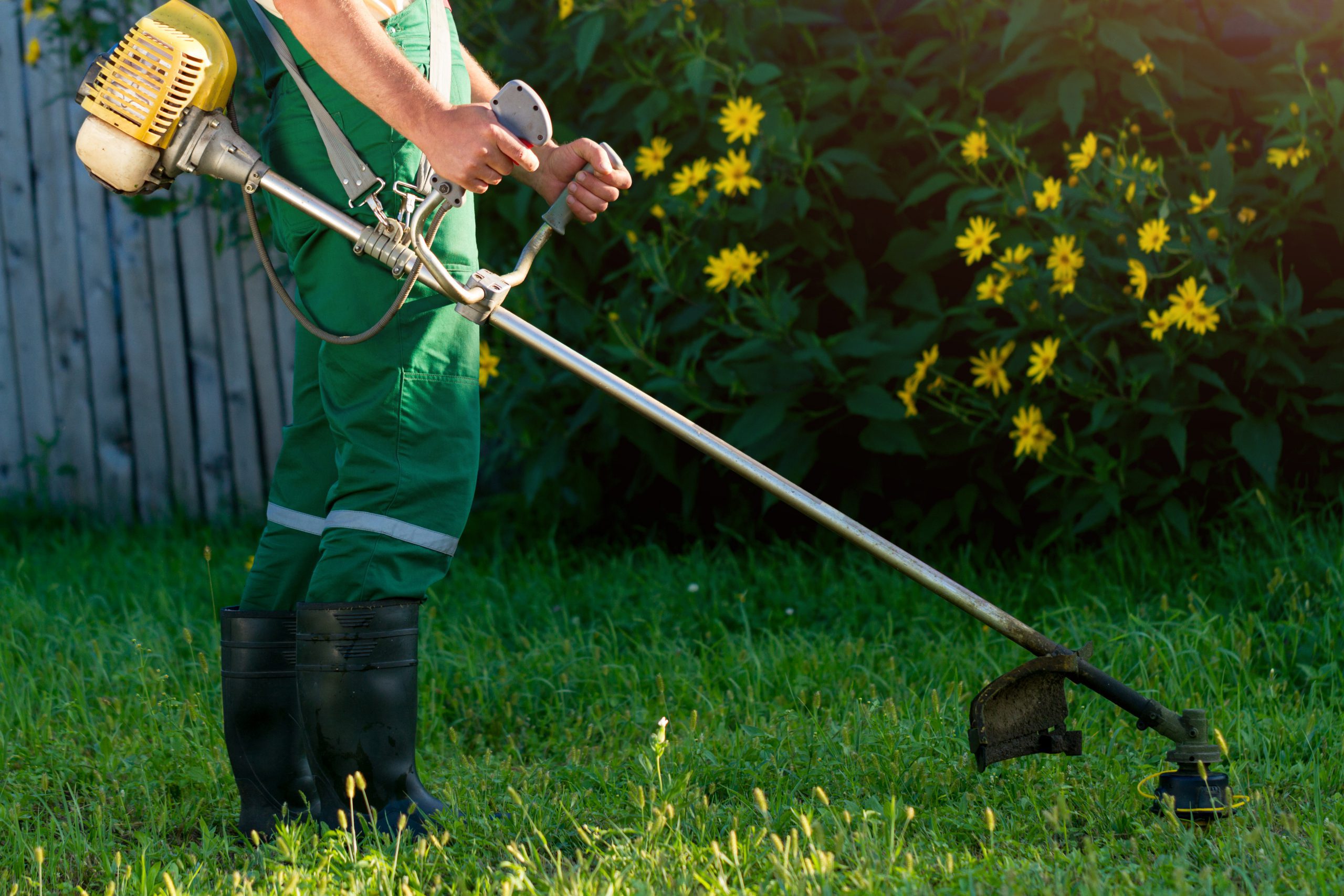Stump removal is an essential aspect of landscape maintenance, especially after tree removal, as leaving a stump can lead to issues such as pests, regrowth, and safety hazards. In 2026, the cost of stump removal continues to be a key consideration for homeowners and property managers. The price varies based on several factors, including the size of the stump, its location, and the method used for removal. On average, stump removal can cost anywhere between $150 to $500, depending on the complexity of the job.
There are different methods available for stump removal, such as grinding, chemical rotting, and manual removing. Each method has its own price range, with stump grinding being the most common due to its efficiency and relatively moderate cost. Chemical methods, while cheaper, can take longer, whereas manual removal is labor-intensive and typically more expensive. Understanding the cost implications is crucial, as it helps individuals budget for the project while ensuring their landscape remains safe and visually appealing.
Easily hire the best lawn & landscape pros working in your neighborhood.
Average Cost of Stump Removal in 2026
The average cost for stump removal in 2026 typically ranges between $150 and $500, depending on several influencing factors. One of the primary factors is the stump’s size, as larger stumps require more time, labor, and equipment to remove. For example, small stumps (under 12 inches in diameter) costs around $75 to $150 to remove, while medium stumps (12 to 24 inches) may range from $150 to $300. Large stumps, exceeding 24 inches, can cost $300 to $600 or more. Location also plays a role, as urban areas with higher labor costs generally see higher stump removal prices compared to rural areas.
The method of removal significantly impacts the price. Stump grinding, the most common method, averages between $100 and $400 per stump, depending on its size. This method is preferred for its efficiency and affordability. Manual removal, often used for particularly large or difficult to reach stumps, can be much more expensive, potentially exceeding $500 due to the intensive labor involved. Chemical rotting is a slower, cheaper option, costing between $50 and $150, but it requires months to break down the stump fully.
Additional factors like stump accessibility, soil, type, and the presence of rocks or structures near the stump can increase the complexity and cost of removal. On average, homeowners spend around $300 for stump removal, but prices can vary widely based on these variables. Understanding these factors help ensure a more accurate budget for stump removal projects.

Cost Estimator by Stump Size
Stump size plays a significant role in determining the cost of removal, as larger stumps require more time, labor, and specialized equipment to remove. The size of a stump is typically measured by its diameter, which is the distance across the widest part of the stump. This measurement is taken at ground level, as the portion of the stump above the surface is what will be removed. In general, stump removal companies use this diameter to estimate the cost of removal, as larger stumps have deeper and more extensive root systems that are more difficult to manage.
For small stumps, typically under 12 inches in diameter, removal can cost between $75 and $150. These stumps are relatively easy to remove, often requiring less time and equipment. Medium-sized stumps, with diameters ranging from 12 to 24 inches, generally cost between $150 and $300. These stumps may have more substantial roots, making the job more labor-intensive. Large stumps, exceeding 24 inches in diameter, can cost anywhere from $300 to $600 or more. The extensive root systems of larger stumps require heavy-duty equipment like stump grinders and often involve more labor.
The larger the stump, the more work is required to remove it, which translates into higher costs. Additionally, factors like soil type and the stump’s proximity to other structures can further influence the cost, as they may increase the complexity of the removal process. Understanding how stump size affects costs helps property owners better anticipate their expenses when planning a stump removal project.
Small Stump Removal Costs
Removing small stumps, typically those under 12 inches in diameter, tends to be more affordable, with costing ranging from. $75 to $150 on average. These stumps are easier to manage due to their smaller size and less extensive root systems, often require less time and equipment. Homeowners may find potential savings by bundling multiple small stump removals together, as companies might offer discounts for removing several stumps in one visit. Additionally, if the stump is in an accessible location, the cost could be on the lower end of the range.
However, there can still be challenges, such as if the stump is in a hard to reach area, near structures, or surrounded by rocky soil. In these cases, the removal process becomes more complex, potentially raising costs. Some may consider chemical rotting as a cost-saving option, but it takes time and patience since the stump can take several months to fully decompose.
Large Stump Removal Costs
The cost of removing large stumps, typically those over 24 inches in diameter, ranges from $300 to $600 or more. These stumps are more labor-intensive due to their size and extensive root systems, which require heavy-duty equipment like large stump grinders. Removing larger stumps also involves additional challenges, such as deeper roots and the possibility of interference with underground utilities or nearby structures, both of which can raise costs.
While the price is higher, potential savings can be found by getting multiple stumps removed simultaneously, as stump removal companies often provide bulk discounts. Another way to save is to consider stump grinding as opposed to removal. Typically this is less expensive and still addresses most of the visual and safety concerns. However, for full removal, homeowners should be prepared for added complexity and labor, as large stumps typically require more resources, time, and expertise to handle effectively.
Factors Influencing Stump Removal Costs
Several factors can significantly affect the overall cost of stump removal, beyond just the size of the stump itself. One key factor is the number of stumps to be removed. Removing multiple stumps at once can often result in savings, as many stump removal companies offer bulk pricing. Instead of paying the full price per stump, homeowners can benefits from a reduced rate for each additional stump, making it more cost-effective to address all stumps in a yard during a single visit.
Another crucial factor is accessibility. Stumps located in hard to reach areas, such as those in a fenced yard, near buildings, or in densely wooded areas, can increase costs. Removal equipment needs space to maneuver, and if the stump is in a tight or obstructed location, the job may require more labor and time, leading to higher prices. Additionally, if heavy equipment like a stump grinder cannot access the area easily, the use of smaller, more manual tools might be necessary, further driving up labor costs.
Tree type and root complexity also play a significant role in determining stump removal costs. Different tree species have varying root structures. For example, hardwood trees like oak or maple tend to have more extensive and stubborn root systems, which are more difficult to grind down or remove entirely. Softer wood trees, like pine or birch, generally have less dense root systems, making their stumps easier and cheaper to remove. Root complexity can also be influenced by soil type; stumps embedded in rocky or compacted soil are harder to extract and may incur additional costs.
Lastly, factors like tree age and health can come into play. Older, well-established trees often have deeper and more intricate root systems that require more time and specialized equipment to remove. On the other hand, diseased or decayed trees may have weaker roots, which could lower the overall cost.
Easily hire the best lawn & landscape pros working in your neighborhood.
Number of Stumps
The number of stumps to be removed significantly affects pricing, as many stump removal companies offer discounts or package deals when multiple stumps are involved. Typically, removing a single stump costs more on a per-stump basis, as the company charged for equipment setup, labor, and transportation. However, when multiple stumps are removed in one job, the cost per stump decreases because the equipment is already on-site, and the time spent per stump is reduced.. For example, while a single stump might cost $150, adding several more may bring the price down to $50 to $100 per additional stump, depending on size and complexity.
This bundling approach helps homeowners save money by addressing all their stump removal needs in one visit rather than multiple stumps on their property, ensuring that they get more value from the service.
Accessibility
Access to the stump plays a signifiant role in determining removal costs, especially when it’s located in a difficult to reach area like a backyard or near a structure. Stumps in open, accessible areas are easier to remove, allowing large equipment, such as stump grinders, to be used efficiently. However, when a stump is located in a confined space, such as behind a fence, close to a building, or in a landscaped area, the removal process becomes more complex and labor-intensive.
In such cases, smaller, more manual tools may be required, which increases labor time and effort. Additionally, the risk of damaging nearby structures or landscaping adds to the complexity, often raising the cost. Depending on the degree of difficulty, the price can increase by $50 to $150 or more due to the extra time and precautions needed. The harder it is to access the stump, the more equipment and labor will factor into the final cost.

Tree Type and Root Complexity
Different tree types and root systems can greatly affect the difficulty and cost of stump removal. Trees with dense, complex root systems, such as oaks, maples, and other hardwood species, are more difficult to remove because their roots spread deep and wide, anchoring the stump firmly in the ground. Removing these types of stumps often requires heavy-duty equipment, more labor, and additional time, which increases the overall cost.
In contrast, softer wood trees like pines, birches, or firs typically have less extensive and shallower root systems, making them easier and fast to remove. As a result, stumps from softwood trees often cost less to remove because the process is less labor-intensive and requires fewer resources. Additionally, soil type can also impact removal difficulty; stumps in rocky or compacted soil are harder to extract, which can further drive up costs.
Types of Stump Removal Methods
There are several stump removal methods available, each with different costs and time requirements. The most common and efficient method is stump grinding, where a machine grinds the stump down to just below ground level. Stump grinding typically costs between $100 and $400 per stump, depending on its size and location. This method is preferred for its speed and ability to handle larger stumps. While it doesn’t remove the roots, it eliminates the visible portion of the stump and prevents regrowth.
Chemical rotting, also known as chemical stump removal, is another option. This method involves applying chemicals, usually potassium nitrate, to accelerate the natural decay process. It is significantly cheaper, often costing between $50 and $150 per stump. However, chemical rotting taking much longer, sometimes several months, for the stump to fully decompose. It’s best suited for homeowners who are not in a rush to remove the stump and are looking for a more cost-effective, low-effort option.
Another option is manual stump removal, where the entire stump and its root system are dug out by hand or with machinery. This method is labor-intensive and usually more expensive, costing $300 to $600 or more, depending on the stump size and complexity. It’s typically used for larger stumps or in areas where grinding isn’t feasible.
Stump Grinding
Stump grinding is a popular and efficient method for removing tree stumps. The process involves using a stump grinder, a machine with a rotating blade, to grind the stump down to just below ground level. This method is fast and effective, typically costing between $100 and $400 per stump, depending on its size and location. Stump grinding offers several benefits: it quickly eliminates the visible portion of the stump, prevents regrowths, and leaves the landscape smooth for replanting or landscaping.
However, one potential downside is that stump grinding doesn’t remove the tree’s root system, which remains underground and may slowly decompose over time. In some cases, this can lead to slight settling of the ground in the future. Additionally, if the stump is near structures or underground utilities, extra care is needed, which can raise costs.
Easily hire the best lawn & landscape pros working in your neighborhood.
Chemical Rotting
Chemical rotting is a slow but cost-effective method for removing stumps. The process involves drilling holes into the stump and filling them with chemicals, typically potassium nitrate, which accelerates the natural decomposition process. This method is one of the least expensive options, usually costing between $50 and $150 per stump. Over time, the chemicals break down the wood, making the stump soft and easy to remove manually or allowing it to decompose quickly.
The main advantage of chemical rotting is its low cost and minimal labor. However, it requires patience, as the stump can take several months to fully decompose. This method is ideal for homeowners who aren’t in a rush to remove the stump. One the downside, the chemicals used can be harmful to surrounding plants and soil, and it may not be suitable for large or deeply rooted stumps.

DIY vs. Professional Stump Removal Costs
The decision between DIY stump removal and hiring a professional depends on various factors, including stump size, available tools, labor, and personal expertise. DIY stump removal can be more cost-effective for small stumps, as it typically requires basic tools like a shovel, axe, or a rented stump grinder, which can cost around $100 to $200 per day. For homeowners willing to invest time and effort, this approach saves on labor costs. Chemical rotting, another DIY option, is affordable at $20 to $50 for chemicals but requires patience, as it can take months to fully decompose the stump.
However, DIY methods present challenges. Manual removal, especially for larger stumps or those with complex root systems, is physically demanding and time-consuming. Additionally, renting heavy equipment like stump grinders can be difficult to operate safely without proper experience, leading to potential damage or injury.
On the other hand, hiring a professional is more practical for larger stumps, stumps near structures, or multiple stumps. Professional stump removal services range from $150 to $600 per stump, depending on size and complexity. Though more expensive, professionals bring specialized equipment, expertise, and liability coverage, ensuring the job is done efficiently and safely. Hiring a professional also reduces the risk of damage to surrounding landscaping or structures, which can be an issue with DIY attempts.
DIY stump removal is worth considering for small, accessible stumps or for those who want a budget-friendly, albeit time-consuming, option. However, when dealing with large stumps, challenging locations, or safety concerns, hiring a professional is more practical, as it saves time, reduces risk, and ensures thorough stump removal with less hassle.
Cost of Stump Removal by Location
Stump removal costs can vary significantly based on geographical location, influenced by factors such as labor rates, local regulations, and the accessibility of the area. In urban areas or regions with high cost of living, labor rates tend to be higher, which increases the overall cost of stump removal. For example, cities like New York or San Francisco may see stump removal prices at the upper end of the national range, around $400 to $600 per stump, due to higher wages and the demand for services.
In contrast, rural areas or regions with lower living costs, such as the Midwest or the South, typically offer lower labor rates, with stump removal often costing between $100 and $300. However, remote areas may incur additional travel fees, especially if equipment needs to be transported over long distances.
Local regulations can also impact pricing. In some regions, environmental or safety regulations may require specific permits or more cautious removal methods, raising costs. For instance, areas prone to soil erosion or regions with protected tree species may involve more complex, and therefore more expensive, stump removal processes.
Accessibility is another critical factor. In mountainous or densely wooded regions, removing stumps may require specialized equipment or additional labor, leading to higher costs. Conversely, areas with flat, open landscapes may result in lower costs due to easier access.
Additional Services and Their Costs
In addition, to stump removal, many landscaping and tree care companies offer related services such as tree trimming, sodding, and tree transplanting. Tree trimming, which involves cutting away dead or overgrown branches, typically costs between $250 and $700, depending on the size and health of the tree. Sodding, the process of installing fresh grass, can range from $1 to $2 per square foot. Meanwhile, tree transplanting, which involves moving an entire tree to a new location, is more labor-intensive and can cost anywhere from $300 to $3,000, depending on the tree’s size and the complexity of the move.
Bundling these services with stump removal can often reduce overall costs. For instance, if a company is already on-site with equipment to remove stumps, they may offer discounts for additional services like tree trimming or sodding, as the cost of transporting tools and labor is already accounted for. Homeowners can save money by addressing multiple landscaping needs in one visit rather than paying separately for each service. This bundled approach not only saves time but also ensures consistent quality across all aspects of tree care and lawn maintenance.

How to Save Money on Stump Removal
Reducing stump removal costs can be achieved by following a few practical tips. One of the most effective strategies is to compare multiple quotes from different service providers. Prices can very significantly between companies, so gathering at least three quotes ensures that you get the best deal without sacrificing quality. It’s also wise to ask about potential discounts or promotions. Tree work quotes can be easily requested on LawnGuru’s special services page! Get multiple quotes from different providers in your area.
Scheduling stump removal during off-peak seasons can also lower costs. Spring and summer are typically busy times for tree care companies, leading to higher prices. By scheduling stump removal in late fall or winter, when demand is lower, you may receive more competitive pricing as businesses are looking to fill their schedule.
Another cost-saving strategy is to bundle services. If you need other landscaping or tree care services, such as tree trimming, sodding, or tree removal, consider hiring the same company to handle everything. Many companies offer discounts when multiple services are bundled together, reducing the overall cost compared to hiring separate contractors for each job.
Frequently Asked Questions About Stump Removal
Stump removal often raises common questions that help homeowners make informed decisions. One frequently asked question is whether stump removal is necessary. While leaving a stump may seem harmless, it can lead to problems like pest infestations, fungal growth, and even regrowth of the tree. Additionally, stumps can be hazardous, posing trip risks or hindering landscaping projects.
Another common questions is how long stump removal takes. This time required depends on the size of the stump and the method used. Stump grinding typically takes a few hours, while chemical rotting can take several months to fully decompose a stump.
Homeowners also wonder how to choose between grinding and full removal. Stump grinding is quicker and more affordable but leaves the roots in place. Full removal, through more labor-intensive and costly, eliminates both the stump and the root system, which is ideal if you plant to build or replant in the same area.
Many also ask about what happens to the stump debris. In most cases, the company will leave the wood chips for you to use as mulch, or they can remove it for an additional fee.
Lastly, people often ask how much stump removal costs. Prices vary based on factors like stump size, location, and removal method, but generally range between $150 and $500.
Is It Cheaper to Grind or Remove a Stump?
Stump grinding generally costs less than full stump removal, with prices ranging from $100 to $400 per stump, while full removal can cost $300 to $600 or more. Grinding is quicker and leaves the roots in place, making it more economical for homeowners who don’t need the entire root system removed. Full removal, while more expensive, is necessary for those planning to build or replant in the area. Factors such as the stump’s size, depth of roots, and proximity to structures also impact the choice, with grinding being more cost-effective for simpler jobs.
Does Stump Removal Include Roots?
Stump removal services typically do not include full root removal, as most standard stump grinding only targets the stump itself, leaving the root system intact underground. This method is faster and more affordable, usually costing between $100 and $400. However, if you need the roots fully removed, such as for construction or replanting, the cost increases significantly, often reaching $300 to $600 or more due to the added labor and equipment needed. Full root removal is more time-consuming and expensive, making it essential to clarify your needs when discussing options with stump removal companies.




